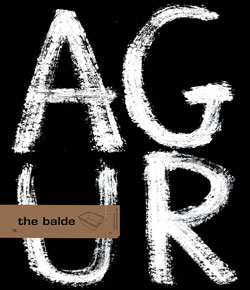the weight of photography
Since we started to carry smartphones around with us and share the photos we take with them on the social networks, we’ve all become photographers. Or, at least, that’s what manufacturers of smartphones and the social networks tell us. In the last few years more photos have been taken than throughout the history of photography, as it’s an ongoing process. What’s more, the look which photos taken with mobile phones have has almost become photo journalism’s aesthetic
in order to look “real”. Facebook, Instagram, Flickr, Pintrest and so on are taking photography to its highest ever rate of consumption. And, in
fact, that’s professional photographers’ main challenge now: making their work stand out and be special in this massive pollution of pictures.
But we wouldn’t like to be pessimistic about photo documentaries. Because, in this time of changes, new possibilities are coming along. Nostalgia often wipes our memory out: until recently, photographers were controlled by large agencies and media editors. Nowadays, the relationship between photographers and their public is much more direct, because of the technological advances we’ve mentioned, in fact. Special photographic projects can start up on their own, without needed intermediaries. For instance, photographer Rob Honstra and writer Arnold Van Bruggn started The Sochi Project five years ago in the area in which the Russian Olympic Games were held.
And that’s just a single example. Thanks to Paywall, crowdfunding and other finance options more and more photographers are carrying out their projects with the photo viewers’ direct finance. Photographers can start their projects online and also use the increasingly popular online magazines. There are many interesting magazines which publish photo features: Posi+tive, The 37th frame, Chambre Noire, Blue Eyes Magazine, File, Bokeh, Vwed, Social Documentary, Lunatic... And, although it may be surprising, more and more photography books are being published. And the most important
thing is that, by using different and cheaper paper publishing options, small, independent publishers are bringing things out which would
not otherwise reach us. Paper magazines about photo reporting have also appeared, (F8)Magazine and Huck, for example. And, even though it’s obvious, we would like to point out that while we do all have the opportunity to take photos, photographers will never disappear. Because it’s the photographer’s eye which takes the photos, not the camera.
in order to look “real”. Facebook, Instagram, Flickr, Pintrest and so on are taking photography to its highest ever rate of consumption. And, in
fact, that’s professional photographers’ main challenge now: making their work stand out and be special in this massive pollution of pictures.
But we wouldn’t like to be pessimistic about photo documentaries. Because, in this time of changes, new possibilities are coming along. Nostalgia often wipes our memory out: until recently, photographers were controlled by large agencies and media editors. Nowadays, the relationship between photographers and their public is much more direct, because of the technological advances we’ve mentioned, in fact. Special photographic projects can start up on their own, without needed intermediaries. For instance, photographer Rob Honstra and writer Arnold Van Bruggn started The Sochi Project five years ago in the area in which the Russian Olympic Games were held.
And that’s just a single example. Thanks to Paywall, crowdfunding and other finance options more and more photographers are carrying out their projects with the photo viewers’ direct finance. Photographers can start their projects online and also use the increasingly popular online magazines. There are many interesting magazines which publish photo features: Posi+tive, The 37th frame, Chambre Noire, Blue Eyes Magazine, File, Bokeh, Vwed, Social Documentary, Lunatic... And, although it may be surprising, more and more photography books are being published. And the most important
thing is that, by using different and cheaper paper publishing options, small, independent publishers are bringing things out which would
not otherwise reach us. Paper magazines about photo reporting have also appeared, (F8)Magazine and Huck, for example. And, even though it’s obvious, we would like to point out that while we do all have the opportunity to take photos, photographers will never disappear. Because it’s the photographer’s eye which takes the photos, not the camera.


